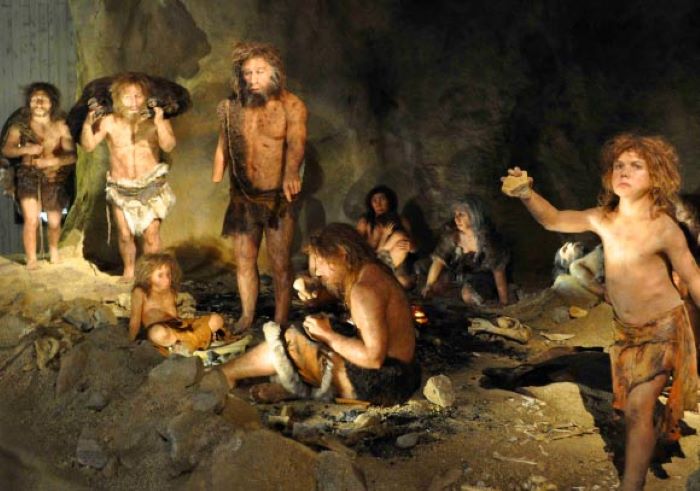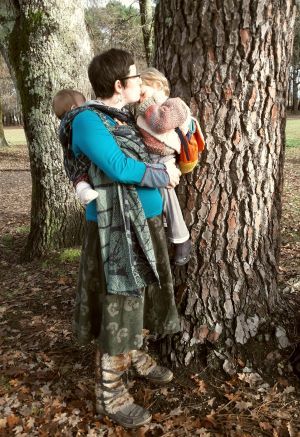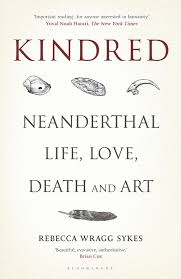 A rendering of Neanderthals in a cave. Image credit: Tyler B. Tretsven. From: sci-news.com A rendering of Neanderthals in a cave. Image credit: Tyler B. Tretsven. From: sci-news.com Doctor, Doctor! I have great news! That malevolent earworm has subsided. I don't have to worry 24/7 about what he is stealing, what he is breaking. I have more time for other things -- like reading. * * * We can’t get enough of our long-lost neighbors. At least, I can’t. And the growing study of Neanderthals tells me this is a collective curiosity. With a flash of recognition, we see something of ourselves in them, as they tried to survive, As the earth thaws, as our science grows, we are learning more about the people who co-existed with “us” until about 40,000 years ago. Many “humans” stare at renderings of what Neanderthals may have looked like, based on recent findings of Neanderthal bones. Sometimes the adults are pictured holding a child, just like us. The latest source of my fascination is a book, “Kindred: Neanderthal Life, Love, Death and Art,” by Rebecca Wragg Sykes, published by Bloomsburg Sigma in November, and already greedily devoured by this reader. Sykes is a scientist who took eight years to write this book. She was still finishing it last spring when the pandemic began, which motivated her to compare our lot with the demise of a previous people. (Just like the Neanderthals, we have some contemporaries with no clue about what is killing a lot of us.)  The author and daughters, mid-book, 2017. The author and daughters, mid-book, 2017. The author gives us the romance of a lost people, still kicking around in some DNA. I am jealous that I do not seem to have a trace while two friends have 1 or 2 percent.. The more I read, the more my admiration grows for Neanderthals, named for one of the early discoveries in the Neander Valley near Dusseldorf, Germany. Sykes describes in great detail how they chiseled tools out of rocks, knowing what they were doing, and how they made spears and arrows to hunt the fat-laden animals that would sustain them. Sykes details how these Neanderthals migrated with the seasons and shifts in climate, how they seemed to know, to remember, where the water was, where hiding places were, where they could cook, congregate, tend to their tools and garments, care for children, and sometimes bury their dead. Other people existed in the same regions – Homo sapiens up from Africa, Denisovans across Asia, both groups encountering Neanderthals as they made their last stand in southern Europe.  Sykes saves the best part for the end – the mystery that has made Neanderthals an appealing subject. Married, with two young daughters, living in mid-Wales, Sykes helps the reader understand a people that got squeezed out, many perishing in the caves and crannies of Spain and France. As we unworthy survivors pollute the only world we have, Sykes points out one benefit of our pollution: Soon we will discover more Neanderthal bodies emerging from the melting permafrost. Twelve hours after I read her prophesy, I found a recent story about an ancient baby wolf that has been found intact in the Yukon. https://www.nytimes.com/2020/12/21/science/wolf-puppy-mummy.html Before we expire, we may understand more about our complex ancestors as they roamed the earth, at least three separate species, standing on two legs, encountering each other on their search for food and shelter and, when they got up close, sometimes doing what came naturally. I don’t think I am giving away too much to reveal Sykes’ final words, which confirmed to me the current aura of these people who were “just like us.” Sykes’ penultimate chapter ends: “Neanderthal. Human. Kindred.” * * * (my previous post on Neanderthals) https://www.georgevecsey.com/home/lets-have-some-respect-for-neanderthals (The recent NYT review of Sykes’ book) https://www.nytimes.com/2020/11/07/books/review/kindred-neanderthals-rebecca-wragg-sykes.html?searchResultPosition=2 1/24/2021 06:02:09 pm
George, Does this mean that the people I consider neanderthals are after all Neanderthals. Comments are closed.
|
Categories
All
|









